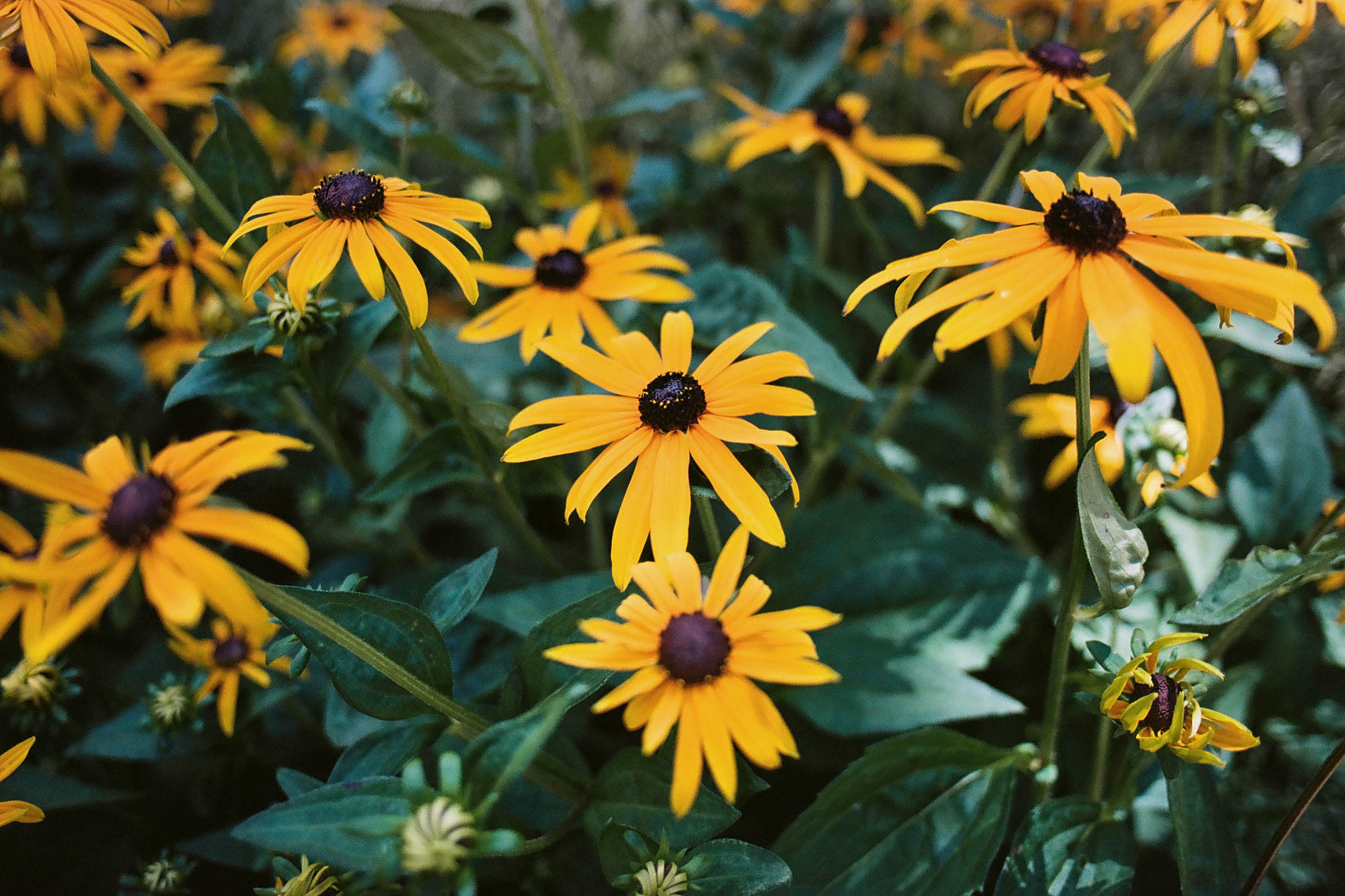MIKE RALEY WPTF Weekend Gardener
Melissa and I just returned from a trip to Norway where we traveled as far north as Myrdal, which is 3,000 feet above sea level and about 350 miles south of the Arctic Circle. It was like a North Carolina winter with leaves on all the trees and some snow on the higher peaks. You wouldn’t think that central and eastern North Carolina would share some of the same plants, but we certainly do. Consider Black-eyed Susan (Rudbeckia hirta). While Black-eyed Susan is native to the Tarheel State, it is definitely not native to Norway. Introduced long ago to many European countries including Norway, we saw Black-eyed Susan growing in most of the areas we visited. We have been growing this adaptable flower for decades in our landscape. Many Norwegians obviously have too.
I have read that Blackeyed Susan got its name from a popular ballad written in the 1700’s that originated in England called “Sweet William’s Farewell to Black-eyed Susan” and composed by a man named John Gay. The information comes, of all places, from a website called “poison.org”! The song tells the story of a woman named Susan who had dark eyes and boarded a ship to say goodbye to her sailor lover Sweet William. The dark center of the blossom is often thought to resemble an eye. Ironically, the Blackeyed Susan was named for a Swedish family- Rudbeck.
Black-eyed Susan is an annual or biennial or perennial in North Carolina that normally blooms from June through September in our landscape. It sometimes depends on how many hungry rabbits attack our crop. Part of the aster family, it is of course kin to the sunflower. Prefers sun but can deal with part shade conditions and seems to like moist, yet well-drained soil. Fortunately for us, it will grow in clay or sand. You know how it goes around here with our soil and drought conditions. Black-eyed Susan will tolerate drought conditions. Now, they do look better with some regular watering; but, most plants and people do too. Another positive when considering the Black-eyed Susan is that it doesn’t really have any insect pests or disease problems according to the folks at the extension service. You’ll be happy to know Rudbeckia self-seeds and will spread by underground rhizomes that are left indentured by the bunnies. You can plant Rudbeckia in spring and fall.
There are a few varieties of Black-Eyed Susan from which to choose: Rudbeckia hirta (Black-eyed Susan), R. fulgida (Orange Coneflower), R tripods (Brown-eyed Susan) and R. maxima (giant Coneflower). I saw some of those at the ever eclectic Cary Downtown Park. NC State University recognizes many cultivars including: “Tiger Eye Gold”, “Sonora”, “Indian Summer”, “Autumn Colors” and “Cherry Brandy” among others. Most cultivars usually range in size from 3 to 4 feet tall. There are some dwarf varieties that only reach about a foot which is good for gardeners with limited space.
If you want a flower for your pollinator garden, then Rudbeckia will do the trick. You will find that bees and butterflies will come to your garden in droves. In the fall you are likely to find a finch or two hanging on to a spent bloom looking for seeds.
As I have said many times, I don’t use a lot of store-bought fertilizer unless it is a sponsor’s product of course. Luckily, Black-eyed Susan doesn’t need a lot of fertilizer during the season.
Many plants respond to deadheading and Rudbeckia is no different. Keep an eye on your plants and you will find they respond to this process that will encourage more blooms.
An interesting fact is that Native Americans found medicinal uses for the black-eyed susan. By the way, it is also the official flower of Appalachian State University.
I think it is probably unanimous, “Weekend Gardener” listeners give a big ole wink to Black-eyed Susan and I do too!
